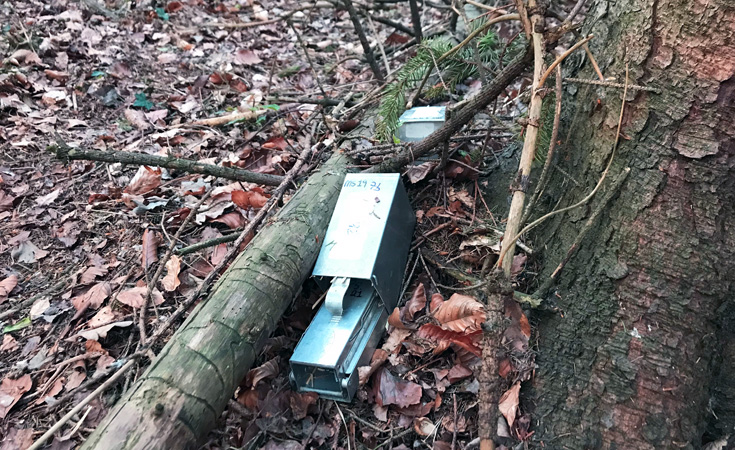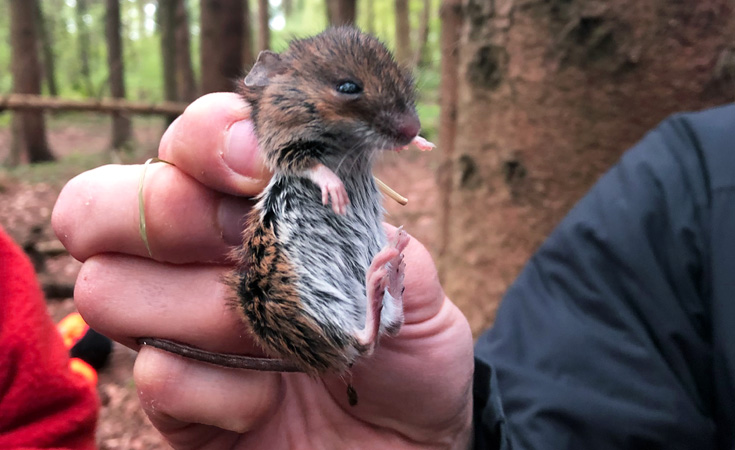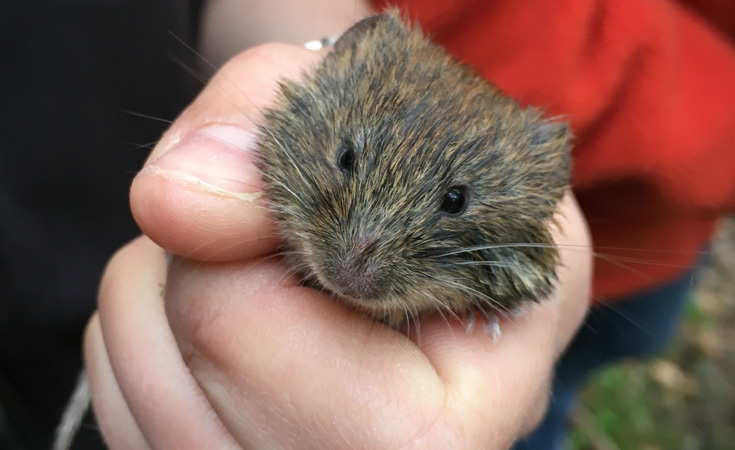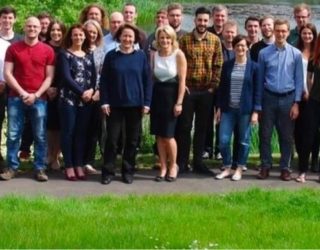As part of the Mammal Society’s ‘Small Mammals in Woodland Project’, several employees from Thomson put themselves forward to volunteer to organise and take part in a small mammal survey in the woodlands within the grounds of Surrey Research Park, Guildford. The aim of the project is to address the lack of recent data on British mammal populations.
The surveys carried out should help inform a database of small mammal population densities in woodland (a key habitat for these species). In the future, the Mammal Society aims to extend these surveys to include other mammal species and habitats throughout the UK.
The survey involves setting out 50 specifically designed traps (that will not cause any harm to the mammals) over a 60m by 60m grid square. The traps are filled with plenty of bedding and food to ensure the welfare of any animals that end up inside the trap and are checked regularly to see if any animals have been captured.

At each check, the traps that have been triggered are taken and any mammals are carefully removed, weighed and identified as efficiently as possible before carefully being released into the woodland, usually next to a tree or into some type of cover so that they are not left exposed.
Where possible, the individuals are also fur clipped before being released. Fur clipping is a technique used to determine if the same individuals are being caught multiple times to help with calculating population size from the data collected. A small patch of fur is trimmed on the animal and the location of the clipping is recorded so that if they are re-captured at a later check, this can be noted.
This requires a good level of handling skills and confidence with the animals to minimise the time spent handling them, and to ensure that their welfare is always the top priority during the survey. The fur clipping does not cause any harm to the animal and is painless, it serves only as a short term identification technique.

The target species for these surveys (when carried out in southern England) are; Wood Mouse (Apodemus sylvaticus); Yellow-necked mouse (Apodemus flavicollis); Harvest mouse (Micromys minutus); House mouse (Mus domesticus); Bank vole (Myodes glareolus); Field vole (Microtus agrestis); Common Shrew (Sorex araneus); Pygmy shrew (Sorex minutus); and Water shrew (Neomys fodiens). More information on each of these species, as well as other mammal species found across Britain and Ireland, is available from the Mammal Society.
Over three successful trapping days, the volunteers safely caught, handled and identified two different species (wood mouse and bank vole) and 35 individual mammals in total, as well as several re-captures.

By undertaking survey work for conservation purposes on a voluntary basis, in the woodlands located close to the company office within the Surrey Research Park, our ecologists lend their expertise to help conservation groups achieve their goals – often contributing to a cause that is important to them. They can also increase their skills in handling animals and approaching different survey techniques that can be applied to their role as a consultant on site.
At Thomson we regularly undertake surveys and mitigation projects for protected species such as water vole and dormouse. Although specific training is provided in house for this work, the skills learnt through volunteering can build experience and form an important part of the learning process.
Find out more and get involved with the Mammal Society’s ‘Small Mammals in Woodland Project’.











